The 10 Coolest Adventure Motorcycles You Can Buy
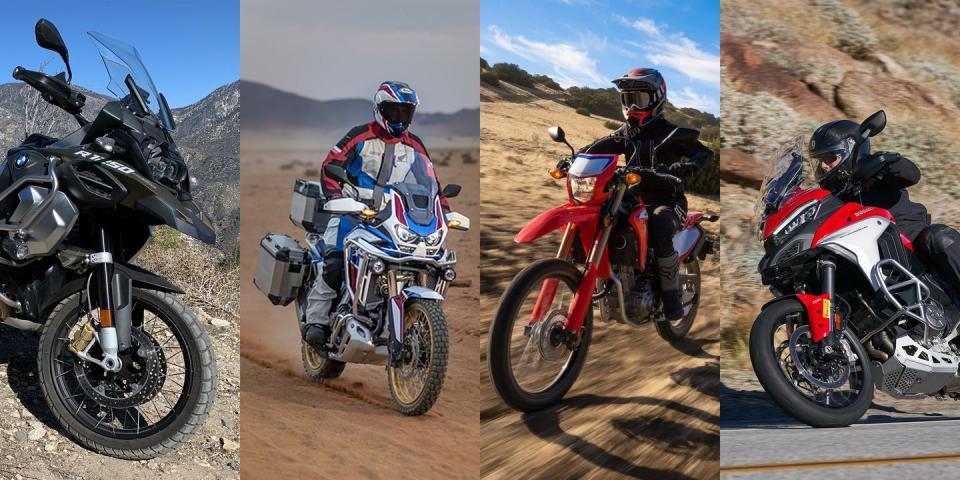
There are so many different kinds of motorcycles out there now, from pure motocross dirt bikes you can fling off ramps like Evel Knievel, to luxury long-distance moto-cruisers as comfortable as your living room couch. Each has a distinct and often narrow purpose, and most achieve that purpose with elan. But there is one category of bike that can do everything and do it well: the adventure bike.
On an ADV, as they’re called, you can cross the Kalahari as easily as you can cross town. Snap-on hard cases mean your fresh T-shirts and other gear stays dry and doesn’t get crushed if you’re crisscrossing the globe. Windshields on most ADV bikes make long days in the saddle not only bug-proof but bucolic. And the seats on which your keister rests are comfortable enough that you don’t need to stop every half hour to get the circulation back.
Adventure bikes are the SUVs of the two-wheeled world; they do everything and have more practicality than other segments of motorcycle. Yet unlike their four-wheeled friends, these bikes can actually go off-road—and you can actually have fun going there. Then, when you’re ready to ride home on the freeway, they’re about the most comfortable pavement pounders around, except for cruisers and sport tourers.
Here, then, is a fairly broad sampling of the best adventure bikes available right now, from the full-zoot high-end and brand-spankin’ new Ducati Multistrada V4, to a couple more affordable bikes you might not need to get a co-signer for. Read on and start planning your ‘round the world ride.
Ducati Multistrada V4
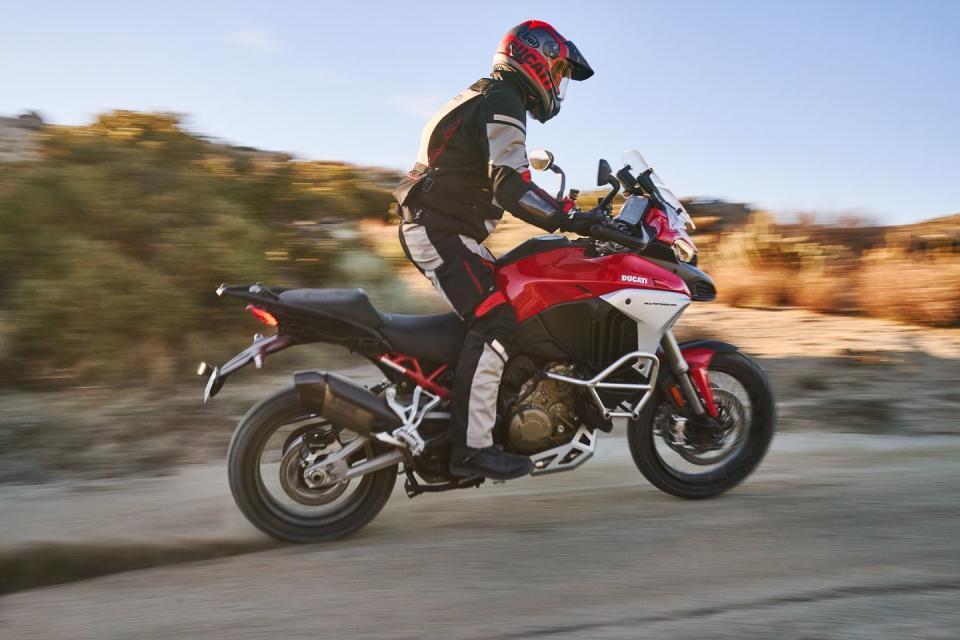
If you wanted to mix metaphors really, really badly, you could say this is the Cadillac of adventure bikes. It is brand new, so it’s loaded with new technology and increased efficiency almost never before seen on a production motorcycle. It has radar front and rear that not only aids safe-distance following with adaptive cruise control, but also offers blind spot detection and an efficient and speedy overtake function, the latter which accelerates when the road is clear and you hit the turn signal and lean into the passing position. There is an IMU, or inertial measuring unit, that works in conjunction with everything from ABS to traction control to offer wheelie control, stoppie control (where the rear wheel might lift when braking) to cornering ABS. The “inertial platform” of electronics even adjusts the semi-active Ducati Skyhook Suspension system, changing the hydraulics of the fork and shock absorber on the V4 S trim level. It even adjusts the auto-leveling function.
The new Multistrada V4 has a new four-cylinder engine, too, replacing the V2 used in previous models. The new powerplant uses springs and rockers to open and close the valves instead of the Desmodromic system for which Ducatis are famous. With 2 mm more bore than the V4 engine found on other Ducs, the power and torque curves are flatter and more accessible. Peak power is 170 hp at 10,500 rpm (a 25% increase), while torque tops out at 92.2 lb-ft at 8,750 revs. The new valvetrain stretches service intervals to 36,000 miles—it was 6,000 miles on the first-gen Multistrada when that model came out in 2003.

There are four riding modes (sport, touring, urban, and enduro), all displayed on the bike’s new 5.5-inch—or optional 6.5-inch—TFT screen. The first three modes are for on-road and the third is for off-road.
Over the course of a long day of riding in and around Borrego Springs, California, I got to try the new Multistrada on a lot of street and a lot of dirt. The most remarkable thing was how well it handles both surfaces. In fact, on the way to and from our afternoon session in the dirt, we rode the same winding mountain road as we did for the on-road ride, except that we were riding on the dirt tire. The Pirelli Scorpion Rally STRs felt surprisingly grippy on the winding mountain road, while they chopped through the dirt and sand of our off-road ride with aplomb. Depending on how much dirt riding you have planned, you could probably get this dirt tire as the only rubber for your Duc and be happy riding on it. I was pushing it about as hard as I could going up and down the twisting mountain road and I never felt any slip or squirm. I’m not as good a rider as you, of course, but I’d think most riders will probably be satisfied with this combination. If you rarely go off road, then you can get the Pirelli Trail IIs for a little more contact patch.
The V4, with its counter-rotating crank, was smooth all the way up to about 8,500 rpm, when it got a little raspy loud. At 140 mph on a long, flat, empty stretch (professional rider, closed course!), the whole bike was smooth and unfettered. After a fairly longish day in the saddle, I felt just fine.
Is it the perfect all-around-do-everything bike? Yes, in all aspects except sticker price, where you pay for all that Italian engineering. The new Multistrada V4 ranges from $19,995 to $26,095. While you can’t put a price on happiness, versatility comes with a little sticker shock.
BMW R 1250 GS Adventure
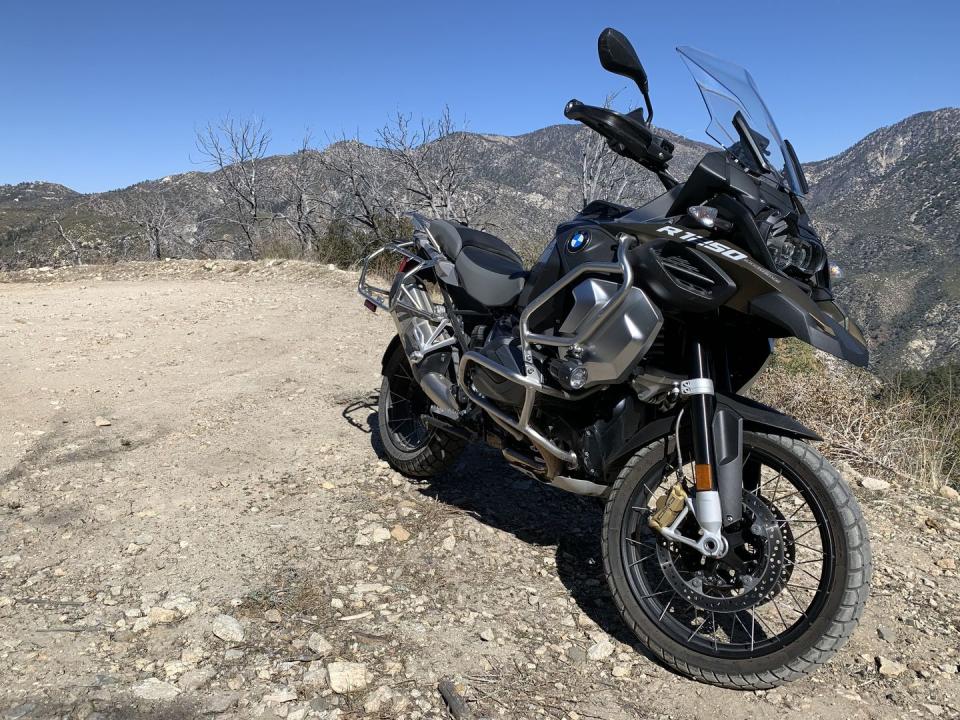
This is the grandaddy OG of adventure bikes. The GS line launched 40 years ago with the 1980 R 80 G/S (Gelande und Strassen, dirt and street). More than 1.2 million GS models have been built over six generations. Since Hubert Auriol’s victory in 1981, BMW motorcycles have won Paris Dakar four times. In the hands of regular adventure riders, they have circled the globe countless times.
The modern R 1250 GS Adventure version of this line is much more refined, of course, with a smooth and quiet 1,254cc flat-twin making 136 hp at 7,750 rpm and 105 lb-ft of torque at 7,550. It’s not as crazy powerful as the Ducati, but you might find that it is more than enough. Three years ago, the R 1250 GS Adventure got an enhanced version of the traditional flat-twin boxer with more power and torque while achieving a smoother operation and greater refinement. The 1,254ccs of displacement is up from 1,170 previously. Mileage is listed as 49.5 mpg, up 5 percent, and the engine gets BMW ShiftCam Variable Engine Timing for more balanced power delivery.
Like the Duc, the GS Adventure is loaded with electronic controls to help you through your ride. There are two ride modes standard on the bike, along with Automatic Stability Control for added safety.
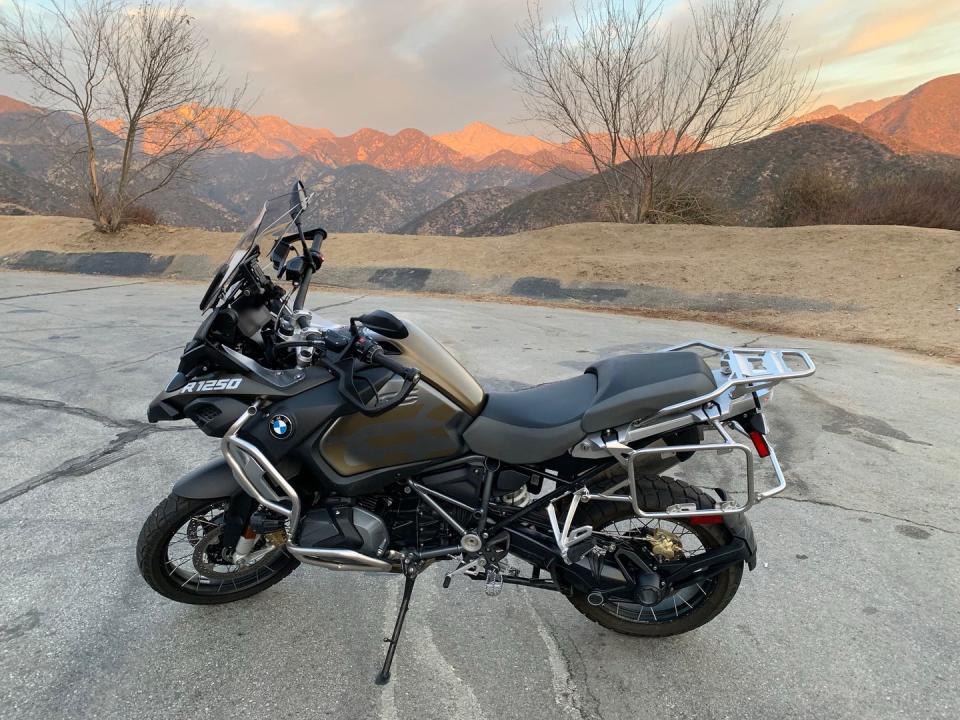
As I type these very words, I still have bugs on my grille from an afternoon of adventure that included both winding mountain roads and off-road, mountainous, dangerous dirt. The GS was at ease in both worlds. Ripping up the paved two-lane not far from my house, the Beemer held up safely and stably as far as I was pushing it. While the weight is higher up in an adventure bike, and the bike overall is heavier than BMW’s more sporty street bikes, it was never a challenge to lean this comfortable adventure motorcycle through corners made more for superbikes. As long as I didn’t overcook it going into corners, the ABS, traction control, and all the other electronics did their jobs and I’m here a-typin’. My press bike stickered for $20,345.
If that’s too much and you still want a BMW, consider the F 900 R and XR mid-range adventure sport entries starting at $8,995. They’re powered by an 895cc upright parallel-twin that makes 99 hp and 67 lb-ft. Ride height is adjustable between 30 to 34 inches. These also offer Dynamic and Dynamic Pro ride modes as options, along with ABS. Of the two, the R is setup more for street while the XR is a little more adventure-oriented.
Honda Africa Twin
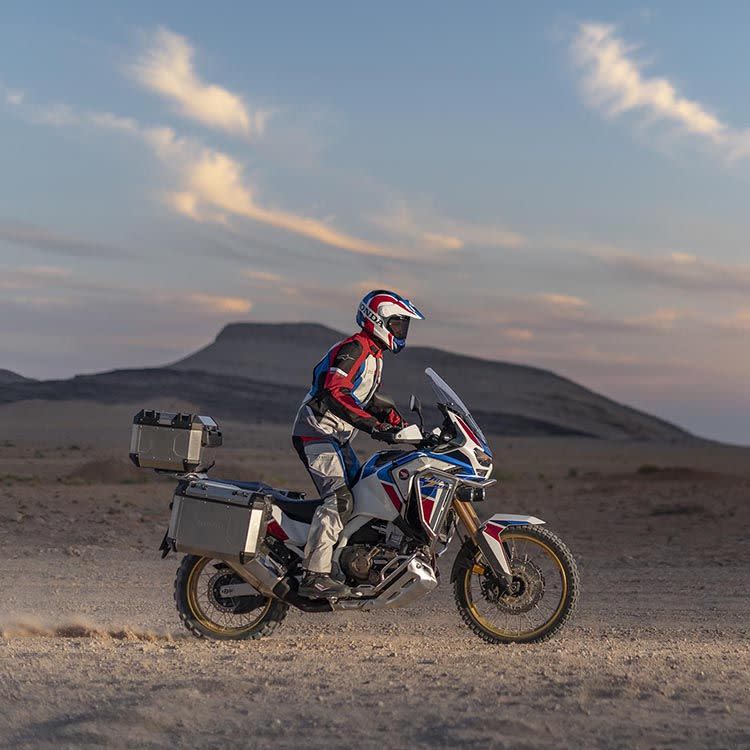
There’s no question Honda lead the way in the early days of dirt riding with the popular Elsinore line of dirt bikes, but the Africa Twin adventure bikes have been around in one form or another since the late ‘80s. However, it was the Africa Twin’s rebirth in 2016 that made the ADV world kind of go nuts.
The new model is lighter, has more power, and gets a bigger feast of electronic rider aids than ever before. The standard model and Adventure Sport ES model will both keep you comfortable and in control on long rides on-road or off. Honda calls this model its “true all-arounder.”
The Africa Twin recently got another 86ccs of displacement so that it is now powered by a 1,084cc liquid-cooled upright parallel-twin (hence the name!). Like most Japanese motorcycle manufacturers, Honda doesn’t list hp and torque but European models are listed at 100 hp and 77 lb-ft. The coolest thing, though, is that you get your choice of six-speed manual or six-speed DCT automatic transmissions. An automatic! On a motorcycle! Yes, the Goldwing also gets and automatic, but here on the Africa Twin it can be a real help when bushwacking through the boondocks. On top of that the chassis is slimmer and lighter than before. And it comes with six ride modes, seven levels of traction control, and three levels of engine braking.
On a long two-day ride a couple years ago, when trading off with a XR650L thumper and the Africa Twin, well, I admit I much preferred the Twin. I am getting soft. But it was so nice. The Africa Twin starts at $14,399 and goes up to $17,999 for a Sports ES with the DCT transmission. That’s still a fairly affordable ride, and worth it if you’re going to be riding long distances. You can also get that XR650L for just $6,999 before destination charge. But get the bigger bike. You’ll thank us at the end of the day.
Suzuki V-Strom 1050XT
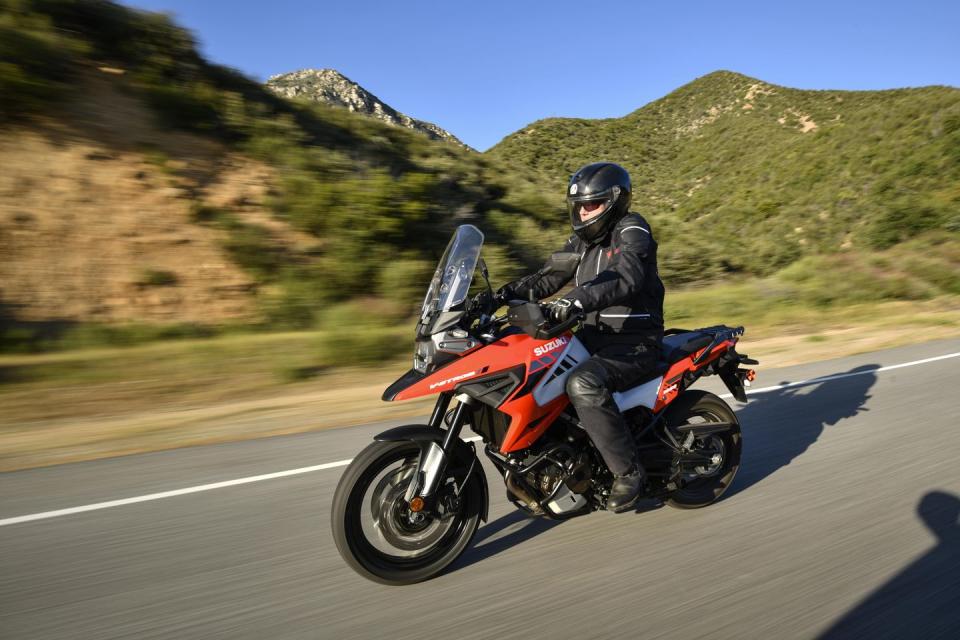

 Yahoo Autos
Yahoo Autos 